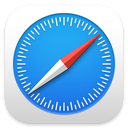Chrome Extensions as Learning Assistive Tools
According to StatCounter Global Stats, Google Chrome dominates the Browser Market Share by 65.99% which is greater than all other web browsers’ shares combined. In the education sector, students and teachers can use chrome extensions for school-related works. During the Coronavirus pandemic, online learning allows some degree of self-directed learning where Google Chrome can offer assistive tools that can bring some convenience and practicality in the self-directed learning process. This can be helpful tools especially to students in higher education.
1. Grammarly
If you’re coming up with a sentence, paragraph, or an article using Google Chrome as your web browser, Grammarly can help you check some types of grammatical errors. With it, you can benefit from correction and word suggestions. This functionality makes the correction a lot easier to manage. You can also set it up to provide definitions and synonyms for words that you double-click. This is great for students who are writing their thesis. If there’s an error, the word/s will be underlined in red and they can know the type of error, and make the decision whether to correct it or not.
2. Zotero
If you’re fun of reading articles, news, and research papers, Zotero connector can be a helpful tool in building a library of related resources. You can create folders for related literature or organize your collections according to some categories. This Google Chrome extension works best with a Zotero app installed in the local device such as a desktop computer or laptop. With the Zotero connector, you can generate citations and bibliography right in your local computer which can be very helpful to academic writers and researchers.
3. Keep
If you’re thinking of storing your random thoughts, you can try “Keep” – a note-taking software that allows users to note important thoughts. With its Google Chrome extension, users can save articles, websites, and other resources for future access. The notifications functionality allows saved notes to be noticed in particular date and time allowing you to work on it. While Evernote is on top of the note-taking software, what I like about Keep is that it’s simple and it’s connected to my Google account.
4. Read Aloud
Sometimes, you might want to listen to the article being read aloud. You might encounter an unfamiliar word in which you’re not sure how to pronounce it. This text-to-speech technology resolves these issues because the app can allow you to convert webpage text to an audio. Letting texts to be read about allows you to consume content in an alternative way that could improve the retention of unfamiliar words. Though, it still depends on what kind of learner you are. The more senses involved in the learning process, the better.
5. Diigo
If you’re into bookmarking and annotating, Diigo can be a must-have tool for you. You can create sticky notes to add comments to texts or highlight some part of the article. You can annotate through the original page itself or on the readability page. You can also annotate some part of the article as a screenshot to add shapes and arrows and work on it as an image. If you bookmark a page through Diigo chrome extension, the link to a page will be saved in your Diigo online library, You can add tags to organize your saved resources. One of the amazing features of Diigo is the outliner feature that helps you structure information and streamline knowledge collection and organization.
These Google Chrome extensions don’t just personalize our browsing experience, but they provide us a wealth of free or low-cost solutions to support our self-directed learning. With so much information that we’re taking on a daily basis, these assistive tools for learning can help us organize, manage, and boost our learning productivity.
What other Google Chrome extensions are you using to facilitate your self-directed learning?
posted Jan 24, 7:18 pm (1120 days ago) , 0 comments




.png?lmsauth=fc99d1aa38ca69bcb52f806e4a852778ca79dcf0)